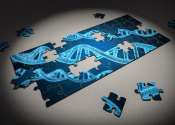Genome Jenga study reveals unexpected gene alliances in the cell
To understand how a cell works, biologists like to take it apart. By removing genes from cells in diverse combinations, researchers have now uncovered how different genes work together to keep cells alive. The research will ...









